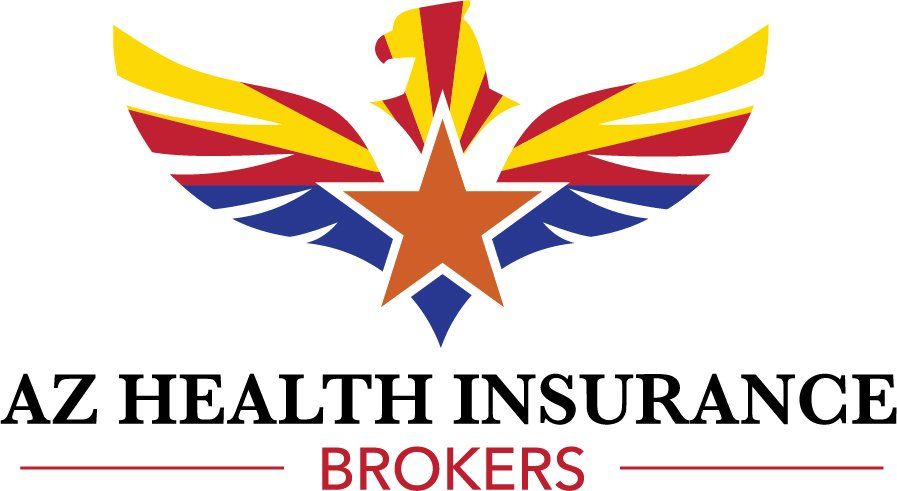The Ultimate Guide to Universal Life Insurance: Benefits, Drawbacks, and Strategies
Life insurance provides a valuable safeguard for your loved ones’ financial future. While term life insurance policies only offer a benefit when the policyholder passes away during the term of the policy, universal life insurance provides unique benefits. Not only does universal life insurance provide protection in case of untimely passing, but it provides a cash value account that serves as an investment option for policyholders while they’re still alive.
Universal life insurance also offers flexibility, in that policyholders can adjust their premium payments to adapt to their unique financial situation. In this guide, learn more about the details of universal life insurance policies and potential benefits of having this
type of life insurance.
Key Takeaways
- Universal life insurance is a flexible, permanent Iife insurance option with adjustable premiums and a cash value component that grows on a tax-deferred basis.
- Universal life insurance policyholders should actively manage their universal life insurance policy to ensure the premiums and cash value remain sufficient to prevent policy lapse while balancing death benefit options and cost.
- Universal life insurance offers different management options, including permanent coverage and indexed for growth options. Each management strategy includes distinct features, risks and advantages, designed to meet diverse financial objectives and risk preferences.
Deciphering Universal Life Insurance: A Primer

Universal life insurance is a type of permanent life insurance that stands out with its unique features:
- It has a cash value component, which is like a built-in savings account.
- The cash value grows over time on a tax-deferred basis, providing a tax-advantaged way to save.
- It offers flexible premiums, allowing you to adjust the amount you pay.
- It provides a death benefit to your beneficiaries when you pass away.
These features make universal life insurance work as a versatile and attractive option for many individuals.
However, as with anything that offers great benefits, universal life insurance demands an understanding of one’s budget, goals, and risk tolerance. Your ability to adjust premium payments and tap into the policy’s cash value hinges on these factors. If you’re willing to navigate these complexities, a universal life insurance policy may be the financial beacon you need.
The Mechanics of Universal Life Insurance Policies

A closer look at the inner workings of universal life insurance policies reveals the factors that fuel their operation. These policies offer the much-needed ability to adjust premium payments, contributing to their flexibility.
A portion of your premium payment goes into a savings account, building the policy’s cash value over time, while the rest covers the death benefit and administrative fees. But remember, if your premium payments fall short of the minimum required, the policy’s cash value must cover the shortfall to prevent the policy from lapsing.
Premium Flexibility and Adjustments
Universal life insurance policies offer a significant advantage, namely the ability to modify premium payments. As your financial circumstances change, you have the flexibility to adjust your payments within certain limits, either raising or lowering them accordingly. This allows you to better manage your financial obligations. This means that if the policy’s cash value is sufficient, you may even reduce or pause premium payments, using the built-up cash value to cover costs.
However, to maintain coverage, the universal life insurance policy must have a positive cash value. This could mean potentially higher premiums if your financial situation changes or if you choose to increase your death benefit. It’s a balancing act, a test of financial acumen, but the flexibility it offers can be a significant advantage in the long run.
Understanding the Cash Value Growth

It’s key to comprehend another aspect of a universal life policy - the growth of the cash value. This portion of the policy earns interest over time, with the growth rate dependent on the insurance company’s performance and prevailing interest rates.
Some features of universal life insurance policies include:
- Minimum performance guarantee to safeguard the cash value against fluctuations in market interest rates
- High fees in the initial years that can hinder the accumulation of cash value
- Requires patience and prudent financial management for potential substantial rewards
Death Benefit Choices in Universal Life Insurance
When it comes to death benefit options, universal life insurance provides considerable adaptability. Policyholders have the option of a level death benefit, which remains fixed, or an increasing death benefit where the cash value balance is added to the predetermined death benefit amount.
This flexibility allows policyholders to adjust their death benefit as their financial circumstances change. For instance, they can undergo a medical exam to increase the benefit or opt to reduce it to lower premium costs. However, it’s crucial to remember that reducing or stopping premium payments, as well as borrowing against the policy, risks reducing the death benefit and may lead to policy lapse if cash values are depleted.
Universal Life Versus Whole Life: Key Differences
As we further explore the realm of life insurance, it becomes vital to recognize the main contrasts between universal life and whole life insurance. While both are types of permanent life insurance, their features and benefits differ significantly.
Universal life insurance offers policyholders the ability to adjust premiums and death benefits, providing more control than whole life policies which have fixed premiums and a guaranteed death benefit.
Additionally, the cash value in a universal life policy can grow based on current interest rates, presenting potential for higher gains, whereas whole life insurance guarantees a steady increase, regardless of market conditions.
The Financial Implications of Universal Life Policies
While traversing the financial terrain of universal life insurance policies can be intricate, it’s a journey that is undoubtedly worthwhile. It’s crucial to evaluate the potential for cash value accumulation and how premium payments contribute to this growth over time.
Indexed universal life insurance plans are particularly influenced by the performance of the stock market indices, which can lead to a rise or fall of the plan’s cash value. However, policyholders need to be aware of the potential for larger premium payments if the cash value of a universal life policy falls below the required minimum.
Estimating Universal Life Insurance Costs
Calculating the universal life insurance cost is a fundamental step in the decision-making process for a universal life insurance policy. To get an accurate estimate, you need to consider factors such as:
- your salary
- mortgage
- funeral costs
- family size
However, bear in mind that premium costs are influenced by several factors, including:
- Your age
- Your health status
- Your lifestyle habits
- The desired amount of coverage
Therefore, it’s highly recommended to compare life insurance quotes from various providers to find the best value for your universal life insurance coverage needs.
Example
Lisa, in her early 30s and in excellent health, single-handedly manages a household with two children on an annual income of $160K. She faces a mortgage of $500K, vehicle loans of $60K, and other debts totaling $35K, leading to monthly expenses of $6K. Intent on building a lasting financial legacy, she considers a permanent insurance policy.
The solution: Lisa chooses a $2M death benefit, ensuring not only debt coverage but also providing a financial safety net for her children. Under a preferred rate, a universal life policy would cost her about $650 per month. In contrast, a whole life policy with the same benefits would run approximately $1500 per month.
Comparing Universal Life to Term Life Insurance Premiums
When contrasting universal life with term life insurance premiums, it’s crucial to account for the innate disparities between the two. Term life insurance only lasts for a set number of years and is cheaper, while universal life insurance is permanent and includes a cash value component.
This cash-value component makes universal life insurance more expensive compared to term life insurance. However, while term life insurance rates tend to increase as the policyholder gets older, universal life insurance premiums remain consistent regardless of the policyholder’s age.
Diverse Universal Life Insurance Options

Universal life insurance isn’t a one-size-fits-all solution. It offers various forms, each designed to meet diverse financial goals and risk tolerance levels.
There are two main strategies of universal life insurance: permanent life insurance at a more reasonable cost or indexed universal life tailored for cash-value growth. Each type offers different features and benefits to suit individual needs.
For instance, indexed universal life insurance plans offer flexibility combined with cash value growth potential tied to a stock market index. On the other hand, universal life geared towards having permanent coverage offers stable premiums and a guaranteed death benefit with a limited focus on cash value growth.
Indexed Universal Life Insurance and Market Ties
Indexed universal life insurance could be an appealing choice for those with a higher risk tolerance. These plans are linked to major stock market indices such as the S&P 500, Dow Jones Industrial Average, and Nasdaq, offering potential for higher returns.
However, it’s important to note that despite being tied to the performance of market indices, indexed universal life insurance may have a capped rate of return. This could limit your earnings in a strong market, but it also provides some protection against losses during market downturns.
Permanent Universal Life Insurance: Stability Over Time
At the opposite end of the spectrum lies universal life used as a type of permanent life insurance policy. This policy is often suitable for individuals looking for permanent death benefit coverage at a more reasonable rate than whole life.
Universal life insurance is designed to provide policyholders with stable premiums and a guaranteed death benefit, often compared to a blend of term and whole life insurance. However, compared to other types of universal life insurance, guaranteed universal life policies may offer little to no cash value accumulation.
Enhancing Your Policy with Riders
Universal life insurance policies provide a variety of add-ons, termed riders, which can augment your policy by providing additional protections or adaptability. For instance, family riders enable the policyholder to add coverage for additional family members, such as children, through child term riders.
Other popular riders include the guaranteed insurability rider, which allows policyholders to increase their death benefit at specific life stages without requiring a medical exam or health questionnaire. The waiver of the cost of insurance rider is also worth considering as it ensures that premium payments are paused in case of the policyholder’s disability, maintaining the death benefit as long as the annual amount is paid.
Selecting the Right Life Insurance Company for Your Universal Life Policy
Selecting the appropriate life insurance company for your universal life policy is a pivotal decision. It’s important to assess the company’s financial stability using ratings provided by independent agencies such as AM Best.
Customer service is another important consideration. You can review customer complaint records from organizations like the National Association of Insurance Commissioners (NAIC) and look at customer satisfaction rankings from J.D. Power to gauge the insurer’s reliability and quality of service.
Consulting with a knowledgeable financial advisor or life insurance agent is also recommended when choosing and evaluating complex universal life insurance policies.
Navigating the Complexities of Universal Life Insurance
Universal life insurance, with its assortment of options and adaptable features, can be intricate. It requires active management of premium payments, cash value growth, and investment choices particularly in policies that emphasize cash-value growth.
Policyholders must carefully manage the funding of their universal life insurance policies, as inadequate funding can lead to policy lapse. It’s also essential to keep an eye on the cash value and ensure that it doesn’t fall below the required minimum to prevent policy lapse.
Summary
As you navigate the complexities of universal life insurance, you've discovered it's more than just a policy; it's a strategic financial tool offering flexibility and growth potential through its cash value component and adjustable premiums. Whether you're aiming to secure your family's future, adjust your financial plans with changing circumstances, or optimize your long-term financial strategies, universal life insurance offers a versatile solution.
Ready to Explore More? Connect with one of our expert life insurance agents today to discuss how universal life insurance can be tailored to your unique financial needs and goals. They can guide you through the nuances of different policy options, helping you make an informed decision that aligns with your long-term objectives. Don’t navigate this alone—book a call now and take the first step towards a secure and flexible financial future with universal life insurance.
Universal Life Insurance Frequently Asked Questions
What is a universal life insurance policy?
A universal life insurance policy is a type of permanent life insurance that includes a cash value component and offers flexibility in premium payments and death benefits. It provides lifelong coverage and a savings element.
How does cash value grow in a universal life insurance policy?
The cash value in a universal life insurance policy grows based on the insurance company's performance and prevailing interest rates, with some policies offering a minimum performance guarantee to protect against fluctuations in market interest rates.
What are the differences between universal life and whole life insurance?
Universal life insurance offers more flexibility in premiums and potential for higher cash value growth compared to whole life insurance's fixed premiums and guaranteed growth. Therefore, it provides a more dynamic approach to managing your policy.
How can I estimate the cost of a universal life insurance policy?
Estimating the cost of a universal life insurance policy requires considering factors like age, health, lifestyle, and coverage amount. It's important to compare quotes from different insurance providers to find the best option for you.
What are some common riders available for universal life insurance policies?
Common riders for universal life insurance policies include family riders, guaranteed insurability riders, accidental death riders, and waiver of cost of insurance riders. These can provide additional protection and flexibility to your policy.












